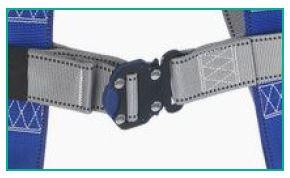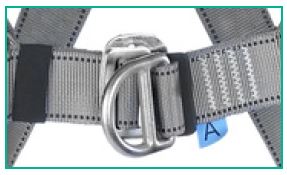What are Safety Harnesses?
When working at height or upon entering a confined space, wearing a safety harness where there is a risk of a fall,injury or a need to rescue, is vital.
Harnesses (full body harness or belt harness) protect the body by way of providing the person with a personal fall arrest system and reducing likeliness of a person coming to harm.
Comfort
Investing in employee comfort isn’t just a kind thing to do, remember that people are more likely to wear a safety harness and wear it properly if it is comfortable and if it easily adapts to lanyards and other connecting devices.
The better the harness, the better chances of employee conformance. Conformance increases safety and reduces liability risks. Most importantly, conformance saves lives.
Construction
Webbing varies drastically from brand to brand. Look for sturdy webbing with tightly-woven yarn that slides through hardware without snagging.
When choosing webbing, keep in mind that it should meet the ANSI standard of 5,000 lbs. tensile strength. Stitching should have enough strength that it does not rip away during a fall, and the webbing should endure
traditional abrasion tests without fraying and puckering.
Once webbing is cut, burned, frayed, etc., the harness must be taken out of service.
Since webbing will be used in sun, heat and moisture over extended periods of time, it should resist natural weather effects. Similarly, in an electrical environment, webbing must resist conductivity, and in a harsh chemical environment, webbing must resist toxic chemical fumes and splashes.
Padding should be flexible and easy to adjust to ensure a comfortable fit. Like webbing, padding must withstand harsh weather and maintain its shape. Some padding can become brittle in cold weather, so look for padding with breathable fabric and durable construction.
Attachments
Rear Attachment
On the rear of the safety harness is the D-ring. It connects your harness to the anchorage point via
attachments. Some harnesses have a height adjustment via buckles on shoulder straps. Back D-rings should be located and tightened in the middle of the back between the shoulder blades for a ‘snug’ fit.
Front Attachment
On the front of the safety harness should be a chest strap. Harnesses have a D-ring on the front. This is to provide the user with a way of attaching to an anchor, or safe system of work, for example, ladder systems.
The important thing to note with this type of attachment is that unless the harness is worn correctly; there is a risk that the D-ring and buckle can strike the user in the neck and under the chin if you are involved in a fall.
Single point harnesses are generally issued with a rear attachment whereas two-point harnesses are issued with both rear and front D rings.
Overhead Rescue Attachment
The overhead rescue attachment allows evacuation descent and remote rescue by lowering or raising during a rescue. A fall arrest device with recovery mechanism may be attached to the overhead attachment point when used in a vertical application providing the lifeline is attached to a tripod for confined space work.
Fastenings
Quick Connect Fastenings make the harness easy to fit and remove

Quick Release Buckles make the harness easy to fit and remove which increase employee’s motivation to put on the harness.

Sizing
NOT all harnesses are “One Size Fits All.” Yes, harnesses can be adjusted to some extent, but not to a size big enough or small enough to encompass all body types.
Harnesses should be snug but not tight. Chest straps should be able to sit across the chest (not the stomach unless you want to shoot out of the harness head-first in a fall event), D-rings should sit comfortably between the shoulder blades, and you should be able to slide a flat hand between your leg strap and your leg. If you cannot adjust the harness accordingly, the harness you are attempting to wear is the incorrect size.
Download Safety Rescue Harness Selection Guide
a1-cbiss supply the IKAR GB range of harnesses. To compare safety harnesses, visit the Safety Harness page




